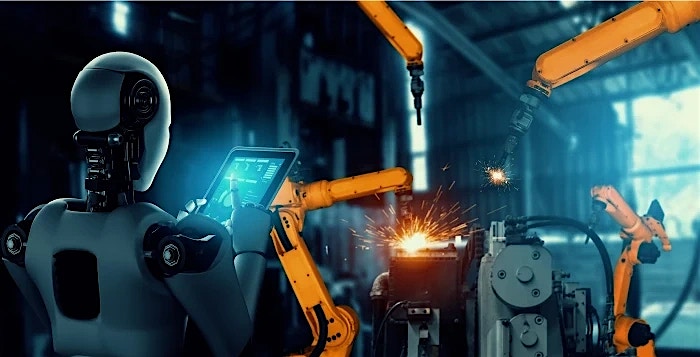Introduction
With the latest geopolitical situations causing supply chain challenges, there is an increased focus from governments across the world on manufacturing and nearshoring of their supply chains. The WSJ projects that major organizations are planning an investment of $526 billion in new factories in regions like Mexico, India, Europe, etc. and businesses are looking for the right technologies to focus their efforts. The adoption of 5G and augmented reality (AR) is reshaping the future of manufacturing. According to a Grand View Research Report, by 2027, the global market for 5G in the automotive industry is projected to reach a whopping $383.15 billion. ABI Research and Nokia states that approximately 90% of manufacturing executives consider investing in digital technologies like 5G to be critical or very important for their future success.
How is 5G different?
One of the misconceptions in the market today is that 5G is a standalone technology, but to realize the true potential of 5G it needs to be integrated with Industry 4.0 technologies. These technologies include the Internet of Things (IoT), artificial intelligence (AI), edge computing, AR and virtual reality (VR).
Utilizing 5G with these technologies will provide the network and bandwidth to generate real-time data and will enable downstream activities like real-time data analytics, AI and AR applications to improve productivity and efficiency. Sensors and connected equipment across the manufacturing value chain can also leverage 5G to connect with each other to create a connected, intelligent ecosystem, which can transform the way companies operate and compete.
Major advantages of 5G:
- 5G eMBB networks provide extremely low latency that is crucial for real-time communication and quick response times for control systems
- It offers higher data transfer rates for the seamless transfer of large amounts of data, a critical component for applications like computer vision and sensor fusion data
- 5G can support a higher number of simultaneous device connections, a crucial feature as more equipment becomes connected and smart through the IoT
- 5G networks are highly reliable and dependable which is important for autonomous, or remote, operation of mission critical equipment and systems
- 5G enables network slicing and optimization which allows for improved fine tuning of networks and bandwidth
How can 5G transform manufacturing? Here are few key ways:
Smart production systems and equipment
5G's fast speeds and ultra-low latency enable hyper-flexibilities. Autonomous mobile robots can replace traditional assembly conveyors and provide infinite flexibility to route and manage car production and run multi-model assembly lines. Smart production systems will also enable the adoption of predictive maintenance, real-time vision-based quality control and other use cases.
Industry reference: Ford engine factory in Europe uses 5G for fleet management of autonomous guided vehicles (AGV).
Connected fleets, supply chains and partner ecosystem
5G allows for real-time tracking of fleets, materials and inventory across the entire supply chain. This can help in optimizing the daily lineup of assembly plants and improve logistics efficiency for both inbound and in-plant logistics. Using track and trace in finished goods (FG) yard management can help faster shipment of products to customers.
Industry reference: General Motors partnered with Verizon for “connected fleet” service to track and optimize for large logistics companies.
New business model and customer experience
Many companies are experimenting with remote repair and remote operations. Using a low latency network along with AR can guide operators and technicians and enable them to perform complex repairs or operate forklifts remotely. 5G's eMBB capability provides high-speed and high-capacity data transfers, supporting applications that require large amounts of bandwidth. This is beneficial for high-quality video streaming, AR and VR applications that area often integrated into automation processes.
Industry reference: BMW utilizes autonomous forklifts in a factory, which are controlled by computing done in the cloud and delivered via 5G.
Complexity reduction through real-time instructions
Pickers and packers in warehouses can use 5G-powered AR devices to receive visual cues and directions for locating items. This can significantly speed up the picking process and reduce errors. AR can also assist in inventory management by providing real-time information about stock levels.
5G is helping with edge computing
By bringing computing resources closer to the source of data origination, edge computing can enable faster response times. This is especially useful in generative AI-based applications and automation applications.
The combination of low latency, high bandwidth, massive device connectivity, reliability, network slicing and support for edge computing makes 5G technology well-suited for various automation and virtual-enabled technologies across industries. It enables faster, more responsive and more efficient automated systems, resulting in improved decision making, more efficient operations and more competitive organizations in today’s global economy.
Foot note
HCLTech has partnerships across network, device and technology providers in 5G and augmented reality areas. Connect with us to discover more on how we can support you.
References
Connectivity Revolution: How 5G is Reshaping the Future of Manufacturing - Unite.AI
5G Devices Market Size, Share And Growth Report, 2030 (grandviewresearch.com)
Automotive revolution – perspective towards 2030 | McKinsey
GM, National Labs Pave the Way for Next-Gen Vehicles (hpcwire.com)





